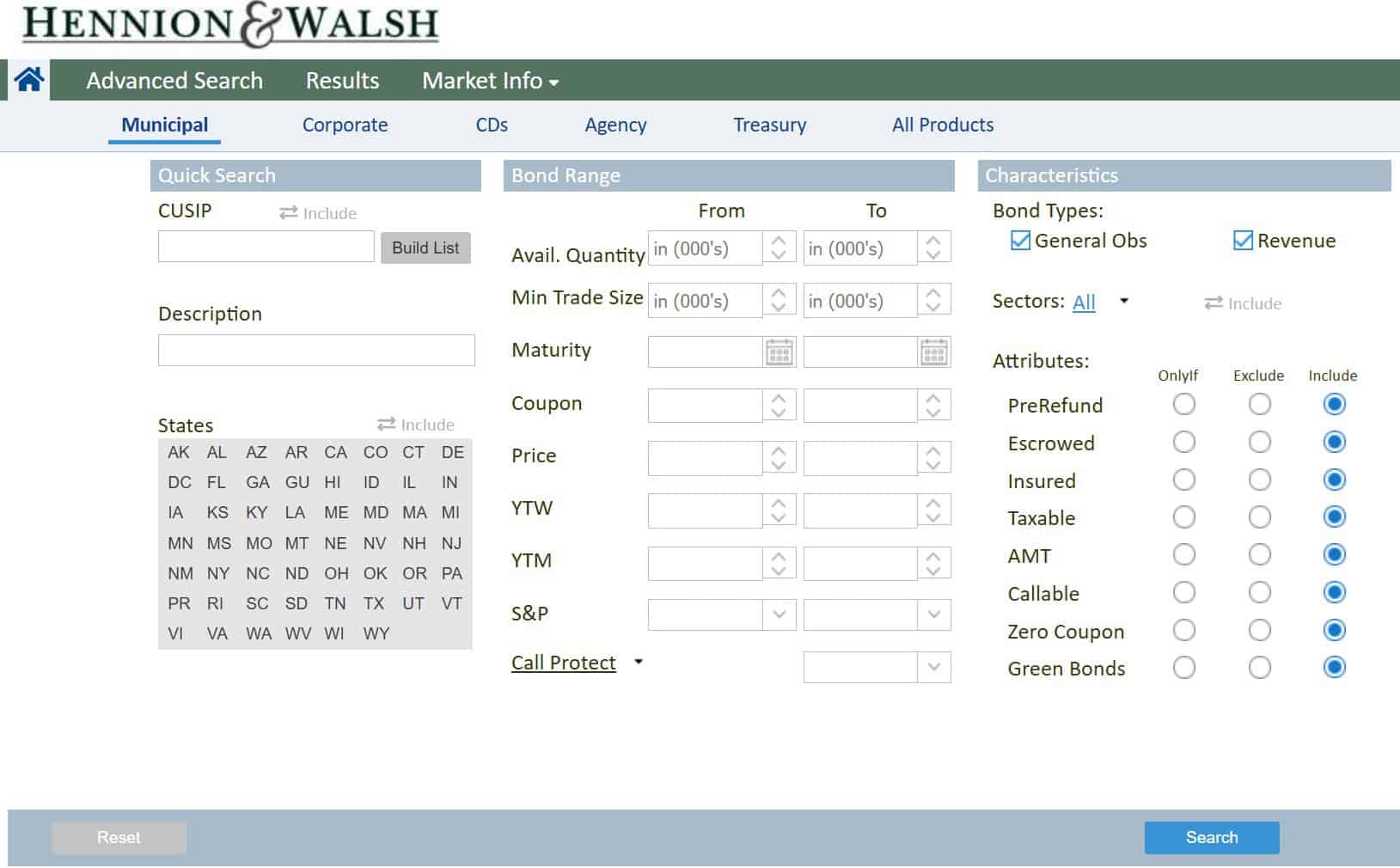
Unlock Municipal Bond Market Opportunities Today
Municipal bonds often seem overlooked by many investors. Similar to an untapped resource, these bonds can offer substantial returns with lower risk profiles.
Given their inherent tax benefits and consistent income streams, it’s imperative to understand their significance within a diversified portfolio. Municipal bonds, often referred to as ‘munis,’ facilitate infrastructure financing for public projects, ensuring community growth while rewarding investors. Consider exploring municipal bonds.
Understanding Municipal Bonds
Municipal bonds, commonly known as ‘munis,’ are debt securities issued by states, cities, and other local government entities. They’re used to finance public projects like schools, highways, and water systems, promising periodic interest payments and the return of principal at maturity.
Investors are often attracted to munis due to their tax-exempt status, which generally applies to interest income. This feature can lead to superior after-tax returns, especially for those in higher tax brackets.
What Are Municipal Bonds?
Municipal bonds, also known as ‘munis,’ are debt securities issued by government entities. Munis often provide tax-free interest income, amplifying their attractiveness for investors in high tax brackets.
These bonds finance public projects such as schools, highways, and water systems, contributing to community development. Issued by states, cities, and local jurisdictions, they promise periodic interest payments and principal repayment upon maturity.
Types of Municipal Bonds
Municipal bonds are categorized mainly into two primary types: General Obligation Bonds and Revenue Bonds.
- General Obligation Bonds (GO Bonds): These bonds are backed by the full faith and credit of the issuing municipality, supported by its taxing power.
- Revenue Bonds: These are secured by specific revenue sources, such as utilities or toll roads, and not by the issuer’s general taxing power.
- Assessment Bonds: These are repaid through property tax assessments on the benefited real estate parcels.
- Tax Increment Financing Bonds (TIF Bonds): These bonds are reimbursed through the increased property tax revenues from the improved area.
Understanding the distinct types of municipal bonds helps in making informed investment decisions. Each type of bond carries different levels of risk and tax advantages, influencing their appeal to various investors. Understanding individual and market dynamics can enhance portfolio diversification and optimize tax efficiency.
Tax Benefits Explained
Municipal bonds offer significant tax advantages that can enhance the overall yield for investors.
- Federal Tax Exemption: Interest earned on municipal bonds is generally exempt from federal income tax.
- State Tax Exemption: For residents of the issuing state, interest can often be exempt from state and local taxes.
- Alternative Minimum Tax (AMT): Certain municipal bonds are exempt from AMT, benefitting high-net-worth individuals.
- Tax-Equivalent Yield: Comparing municipal bonds to taxable bonds through the tax-equivalent yield metric can highlight their true value.
These tax benefits make municipal bonds particularly attractive for investors in higher tax brackets. Consideration of these factors can optimize an investment portfolio’s post-tax return.
Identifying Market Opportunities
Identifying lucrative market opportunities in municipal bonds requires a keen awareness of various economic, political, and demographic trends. Factors such as infrastructure development, population growth, and governmental fiscal health are crucial indicators to monitor.
These trends can uncover undervalued bonds with the potential for substantial returns, offering an attractive balance between risk and reward.
Analyzing Market Trends
Understanding trends in the municipal bond market is key to making informed investment decisions. Here are several pivotal trends to consider:
- Interest Rate Movements: Monitor changes in interest rates, as they directly impact bond prices.
- Government Policies: Legislative actions and fiscal policies can influence municipal bond yields.
- Economic Indicators: Factors like inflation rates, GDP growth, and unemployment rates provide insights into market conditions.
- Credit Ratings: Regularly review the creditworthiness of municipal bond issuers for risk assessment.
- Infrastructure Investments: Increased funding in infrastructure projects can enhance bond attractiveness.
These trends help investors identify promising investment opportunities and mitigate potential risks. By staying informed, investors can leverage shifts in the market to enhance portfolio performance.
Recognizing Underpriced Bonds
Identifying underpriced bonds involves scrutinizing various market factors to find securities that are trading below their intrinsic value.
Firstly, examining macroeconomic conditions and bond issuer fundamentals is a critical step. Investors must analyze economic indicators, such as inflation and GDP growth, alongside issuer-specific factors like fiscal health and revenue streams. This helps in ascertaining the mispricing of bonds relative to their inherent credit quality.
Additionally, credit rating agencies provide essential insights. Discrepancies between an issuer’s credit rating and market perception often indicate underpriced opportunities. Therefore, comparing current market prices with credit ratings can reveal undervalued bonds.
Furthermore, market sentiment and liquidity play pivotal roles. Periods of market turbulence or low liquidity can cause temporary price dislocations. Recognizing these can enable astute investors to purchase underpriced bonds, anticipating price corrections and capital appreciation in more stable conditions.
Economic Indicators to Watch
Investing in municipal bonds requires vigilance in observing key economic indicators.
- Interest Rates: Fluctuations in interest rates significantly impact bond prices and yields.
- Inflation Rates: High inflation erodes purchasing power, potentially decreasing bond value.
- GDP Growth: Strong economic growth can enhance the creditworthiness of bond issuers.
- Employment Data: Labor market strength often correlates with economic stability.
Monitoring these indicators helps investors assess the broader economic environment. Accurate evaluation of these metrics ensures more informed investment decisions in the municipal bond market.
Strategies for Investment
To optimize returns in the municipal bond market, investors should consider a diversified approach targeting various credit ratings, maturities, and geographic regions. This strategic allocation reduces risk, enhances liquidity, and offers potential for higher post-tax returns through exposure to different fiscal environments.
Leveraging tools like laddering and barbell structures enables investors to balance income generation with capital appreciation. Regular portfolio review and rebalancing are crucial for adapting to market changes.
Diversification Techniques
Diversification in the municipal bond market involves spreading investments across multiple sub-sectors, issuers, and geographies. This mitigates individual bond risks and optimizes the overall portfolio. Evaluating bonds from different states offers complimentary fiscal environments.
One can invest in bonds with varied credit ratings to balance risk and reward. High-rated bonds provide stability, while lower-rated bonds offer higher yields. Similarly, integrating bonds with different maturities ensures liquidity should market conditions change.
Municipal bond mutual funds and exchange-traded funds (ETFs) present another avenue for diversifying. By investing in a basket of bonds, these funds reduce exposure to any single issuer’s volatility. As always, rigorous analysis and continuous monitoring remain fundamental to successful diversification strategies.
Long-term vs. Short-term Investments
When investing in municipal bonds, investors must differentiate between long-term and short-term options.
Long-term municipal bonds typically have maturities extending over a decade and can offer higher yields, rewarding patience. These instruments allow for locking in fixed interest rates, which can be advantageous if interest rates decline over time. Moreover, the interest earned remains exempt from federal taxes and potentially state and local taxes.
Short-term municipal bonds, those maturing in one year to five years, offer greater liquidity. They are less sensitive to interest rate fluctuations, presenting lower risk and providing timely returns, making them suitable for investors with immediate capital needs or in volatile market conditions.
An optimal strategy often includes a mix of both long-term and short-term municipal bonds. By constructing a laddered portfolio, investors can achieve a balance between income stability and liquid asset availability, safeguarding themselves against interest rate risks and maintaining portfolio flexibility.
Risk Management
Effective risk management is crucial for navigating the municipal bond market and maximizing potential returns.
In 2016, numerous municipalities, including those in Puerto Rico, experienced fiscal turmoil that underscored the importance of diligent risk assessment. Investors must scrutinize the financial health of bond issuers, considering debt levels, budget deficits, and local economic conditions.
Beyond issuer-specific risks, macroeconomic factors such as interest rate changes play a significant role. Rising interest rates can erode bond values, especially for long-term holdings. Active monitoring and potential rebalancing are vital for mitigating these impacts.
A comprehensive risk management plan should also involve diversification. By spreading investments across various municipalities and bond types, investors can reduce their exposure to any single default or economic downturn, thereby enhancing portfolio resilience.
Investment-grade ratings and professional credit analysis can further safeguard against credit risks, ensuring that only fiscally sound entities are included in the portfolio.
Tools and Resources
Leveraging sophisticated software platforms can enhance municipal bond market assessments and optimize investment strategies.
In particular, financial analytics tools and real-time data services (e.g., Bloomberg Terminal) enable investors to perform in-depth analyses, making it easier to identify creditworthy issuers and attractive yield opportunities. Utilizing “yield calculators” and “bond ladders” aids in structuring diversified portfolios.
Utilizing Bond Rating Services
Leveraging bond rating services, such as Moody’s, S&P, and Fitch, provides a crucial layer of due diligence for municipal bond investors. These organizations offer assessments of an issuer’s creditworthiness.
Typically, these ratings provide insights into the relative risk of default. Understanding ratings categories (e.g., investment-grade versus speculative-grade) is essential. Higher-rated bonds are generally deemed less risky, translating into lower yields but higher security. Conversely, lower-rated bonds offer higher yields but at increased risk. An informed rating analysis thus helps in balancing risk and reward.
The interest on municipal bonds, unless identified as “taxable” or “AMT” (alternative minimum tax), is exempt from federal income tax, but may be subject to state income tax for residents of certain states.




